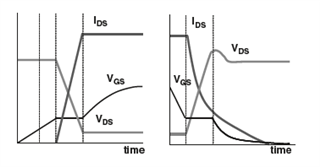Other Parts Discussed in Thread: CSD18534Q5A, BQ25756
Hi team,
I have some troubles in my design, regarded to thermal analysis.
I've designed a buck-boost converter (working as boost) with the CSD18540Q5B MOSFET transistor.
Here, I provide some details of my design:
- FSW = 250KHz
- Vin = 20V
- Vout = 40V
- Iout = 2A
- L = 15uHy
Upon conducting the Power Dissipation Analysis, I have obtained the following results:
- Power @top Mosfet (from buck-boost converter): 1.02W
- Pbottom @bottom Mosfet (from buck-boost converter): 1.70W
(This analysis comes from: https://www.ti.com/lit/ds/symlink/bq25756.pdf?ts=1709829200271&ref_url=https%253A%252F%252Fwww.ti.com%252Fproduct%252FBQ25756 - 9.2.1.2.8 Power MOSFETs Selection)
Taking into account the RJA and an ambient temperature of 25°C, I estimate:
- TJ Top = 75.76 °C
- TJ Bottom = 109.86 °C
However, the thermal measurements conducted with a real PCB board indicate that the MOSFET heats up to 70°C at the case temperature (Based on this measurement, TJ must be greater than the calculated value).
How can I addapt my custom PCB to estimate the case temperature?
Adding another detail to my question is that the estimated loss power is lower than the real.
Thanks


